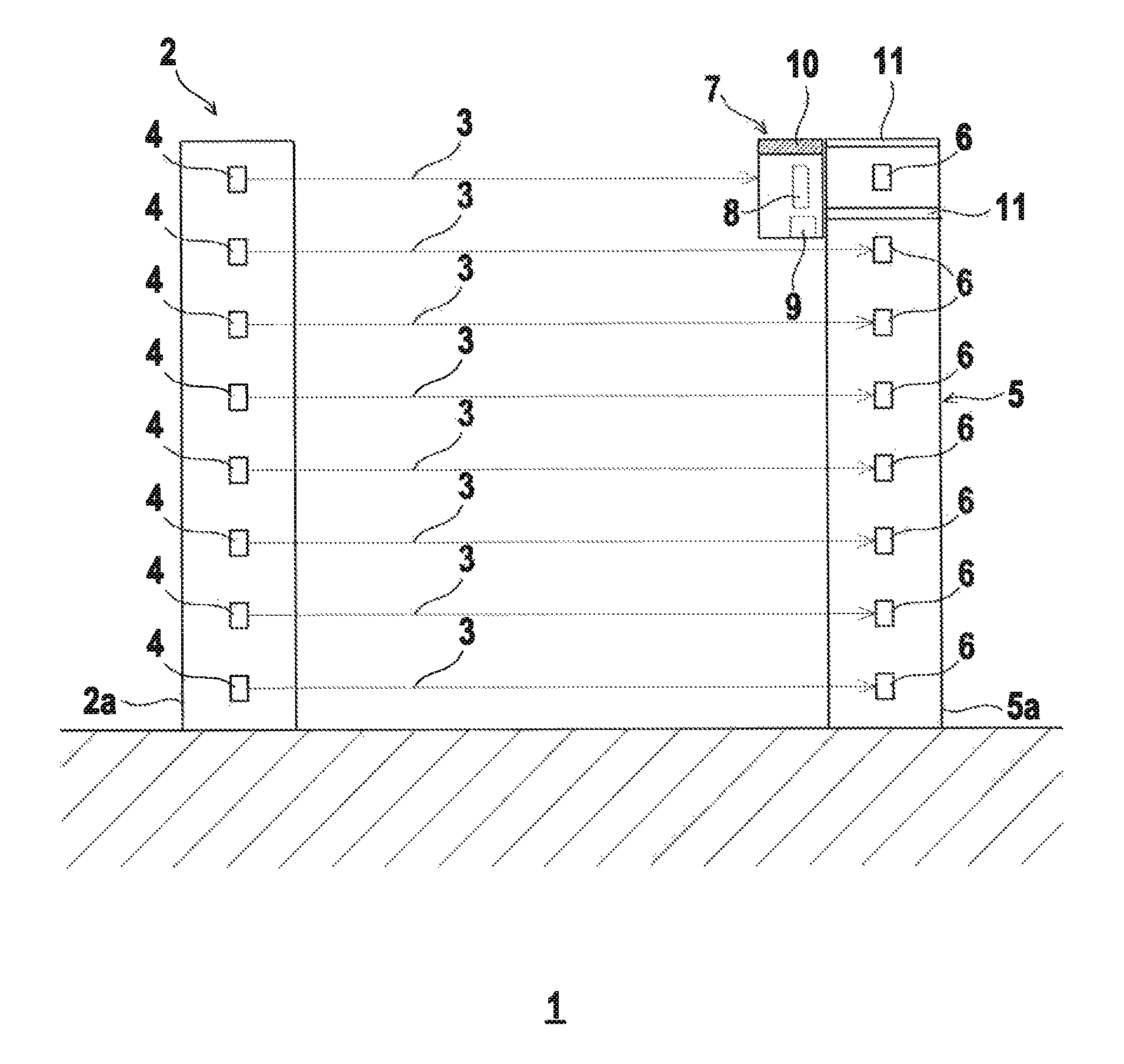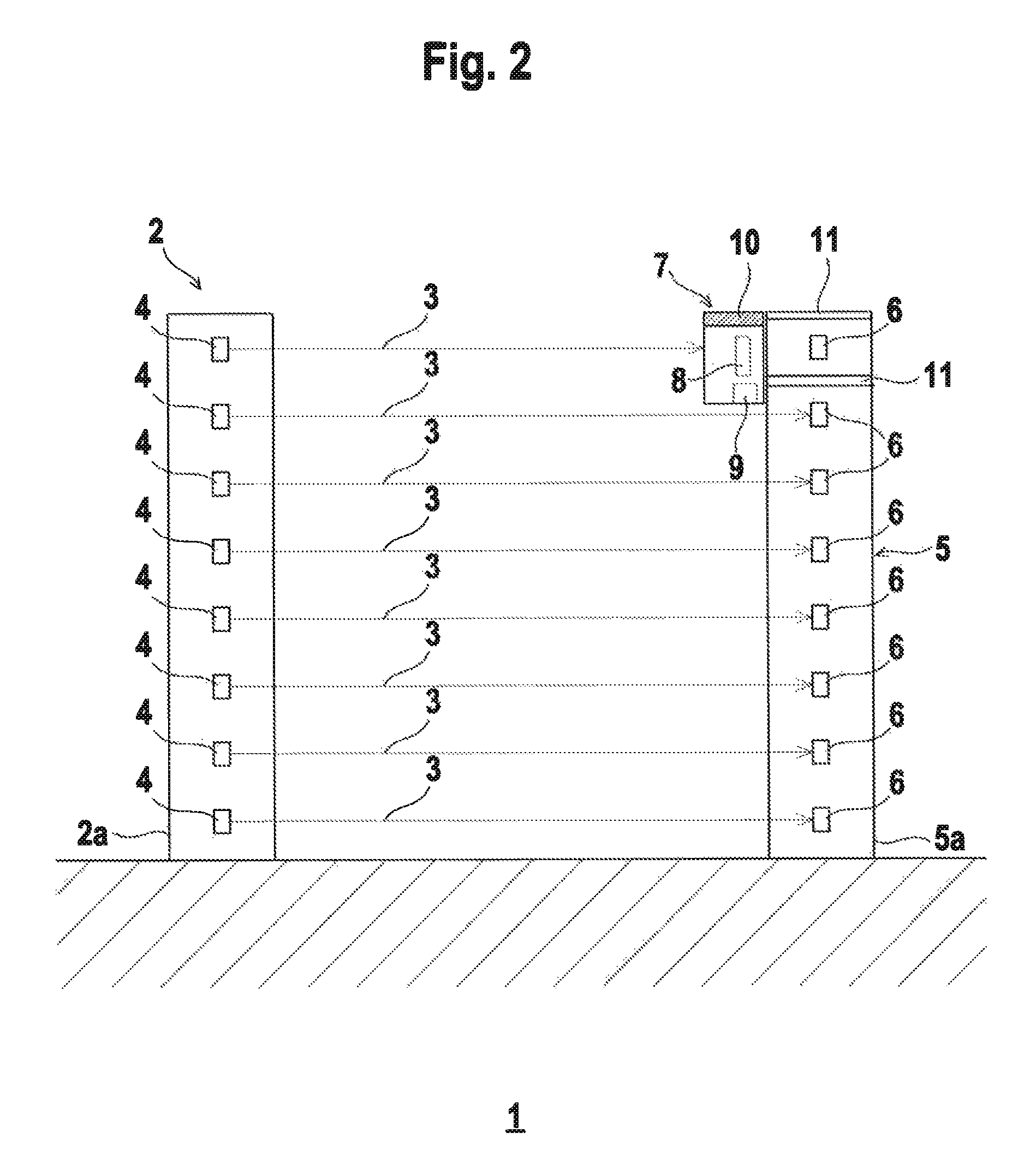Method for aligning a sensor device
a sensor and receiver technology, applied in the direction of electromagnetic transmission, close-range type systems, electrical equipment, etc., can solve the problems of providing indirect and consequently incomplete information about the actual alignment of the transmitter and the receiver, the emission characteristics of the alignment laser on the one hand and the transmitter on the other hand often do not match, and the point of impact of the alignment beam on the receiver unit or the transmitter unit is poorly visibl
- Summary
- Abstract
- Description
- Claims
- Application Information
AI Technical Summary
Benefits of technology
Problems solved by technology
Method used
Image
Examples
Embodiment Construction
[0008]The purpose of the invention is to provide a method and a system which enable the exact and reproducible alignment of a sensor system with minimal input of time and effort.
[0009]The features of the independent claims are intended to solve this problem. Advantageous embodiments and practical further developments of the invention are described in the subclaims.
[0010]The invention relates to a method for aligning a sensor system having a transmitter unit with at least one light beam emitting transmitter and a receiver unit with at least one receiver assigned to the transmitter, which receives the light beams of the transmitter when the sensor system is in operation. To align the transmitter unit, an alignment receiver is placed on the receiver unit in front of the receiver; this alignment receiver has a larger aperture angle than the receiver itself. The light beams emitted by the transmitter are received by the alignment receiver. Data are displayed on a display unit depending o...
PUM
 Login to View More
Login to View More Abstract
Description
Claims
Application Information
 Login to View More
Login to View More - R&D
- Intellectual Property
- Life Sciences
- Materials
- Tech Scout
- Unparalleled Data Quality
- Higher Quality Content
- 60% Fewer Hallucinations
Browse by: Latest US Patents, China's latest patents, Technical Efficacy Thesaurus, Application Domain, Technology Topic, Popular Technical Reports.
© 2025 PatSnap. All rights reserved.Legal|Privacy policy|Modern Slavery Act Transparency Statement|Sitemap|About US| Contact US: help@patsnap.com



